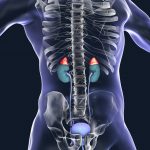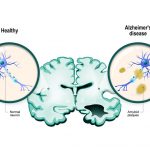Wildfire Smoke Making COVID-19 Cases and Deaths Worse
NODE SMITH, ND
Thousands of COVID-19 cases and deaths in California, Oregon, and Washington between March and December 2020 may be attributable to increases in fine particulate air pollution (PM2.5) from wildfire smoke, according to a new study co-authored by researchers at Harvard T.H. Chan School of Public Health.
The study is the first to quantify the degree to which increases in PM2.5 pollution during the wildfires contributed to excess COVID-19 cases and deaths in the U.S. It was published online August 13, 2021, in Science Advances.
“The year 2020 brought unimaginable challenges in public health, with the convergence of the COVID-19 pandemic and wildfires across the western United States. In this study we are providing evidence that climate change — which increases the frequency and the intensity of wildfires — and the pandemic are a disastrous combination,” said Francesca Dominici, Clarence James Gamble Professor of Biostatistics, Population and Data Science at Harvard Chan School and senior author of the study.
In 2020, at the same time the nation was contending with the COVID-19 pandemic, huge wildfires swept across the western U.S., including some of the largest ever in California and Washington. Wildfires produce high levels of fine particulate matter (PM2.5), which has been linked with a host of negative health outcomes, including premature death, asthma, chronic obstructive pulmonary diseases (COPD), and other respiratory illnesses. In addition, recent studies have found a link between short- and long-term exposure to PM2.5 and COVID-19 cases and deaths.
The researchers — from Harvard Chan School, the John A. Paulson School of Engineering and Applied Sciences at Harvard University, and the Environmental Systems Research Institute in Redlands, Calif. — built and validated a statistical model to quantify the extent to which wildfire smoke may have contributed to excess COVID-19 cases and deaths in California, Oregon, and Washington, three states that bore the brunt of the 2020 wildfires. They looked at the connection between county- and daily-level data on PM2.5 air concentrations from monitoring data, wildfire days from satellite data, and the number of COVID-19 cases and deaths in 92 counties, which represented 95% of the population across the three states. The researchers accounted for factors such as weather, population size, and societal patterns of social distancing and mass gatherings.
The study found that from August 15 to October 15, 2020, when fire activity was greatest, daily levels of PM2.5 during wildfire days were significantly higher than on non-wildfire days, with a median of 31.2 micrograms per cubic meter of air (µg/m3) versus 6.4 (µg/m3). In some counties, the levels of PM2.5 on wildfire days reached extremely high levels. For instance, from September 14 to September 17, 2020, Mono County, Calif., experienced four days in a row with PM2.5 levels higher than 500 µg/m3 as a result of the Creek Fire. Such levels are deemed “hazardous” by the U.S. Environmental Protection Agency.
Wildfires amplified the effect of exposure to PM2.5 on COVID-19 cases and deaths, up to four weeks after the exposure, the study found. In some counties, the percentage of the total number of COVID-19 cases and deaths attributable to high PM2.5 levels was substantial.
On average across all counties, the study found that a daily increase of 10 µg/m3 in PM2.5 each day for 28 subsequent days was associated with an 11.7% increase in COVID-19 cases, and an 8.4% increase in COVID-19 deaths. The biggest effects for the COVID-19 cases were in the counties of Sonoma, Calif., and Whitman, Wash., with a 65.3% and 71.6% increase, respectively. The biggest effects for the COVID-19 deaths were in Calaveras, Calif., and San Bernardino, Calif., with a 52.8% and 65.9% increase, respectively.
When the researchers looked at individual wildfire days and at individual counties, they found that Butte, Calif. and Whitman, Wash. had the highest percentages of total COVID-19 cases attributable to high levels of PM2.5 during the wildfires: Among the total number of COVID-19 cases that occurred in these counties, 17.3% and 18.2%, respectively, were attributable to high levels of PM2.5. Butte, Calif. and Calaveras, Calif. had the highest percentages of total COVID-19 deaths attributable to high levels of PM2.5 during the wildfires: Among the total number of COVID-19 deaths that occurred in these counties, 41% and 137.4%, respectively, were directly attributable to high levels of PM2.5.
Across the three states studied, the cumulative number of COVID-19 cases and deaths attributable to daily increases in PM2.5 from wildfires was, respectively, 19,700 and 750, the study found.
“Climate change will likely bring warmer and drier conditions to the West, providing more fuel for fires to consume and further enhancing fire activity. This study provides policymakers with key information regarding how the effects of one global crisis — climate change — can have cascading effects on concurrent global crises — in this case, the COVID-19 pandemic,” said Dominici.
Funding for the study came from the Environmental Protection Agency (grant 83587201-0), the National Institutes of Health (grants R01ES026217, R01MD012769, R01ES028033, 1R01AG060232-01A1, 1R01ES030616, 1R01AG066793-01R01, 1R01ES029950, and 5T32ES007142), the Alfred P. Sloan Foundation, and the Vice Provost for Research-Harvard University.
1. Xiaodan Zhou, Kevin Josey, Leila Kamareddine, Miah C. Caine, Tianjia Liu, Loretta J. Mickley, Matthew Cooper, Francesca Dominici. Excess of COVID-19 cases and deaths due to fine particulate matter exposure during the 2020 wildfires in the United States. Science Advances, 2021; 7 (33): eabi8789 DOI: 10.1126/sciadv.abi8789

Node Smith, ND is a naturopathic physician in Humboldt, Saskatchewan and associate editor and continuing education director for NDNR. His mission is serving relationships that support the process of transformation, and that ultimately lead to healthier people, businesses and communities. His primary therapeutic tools include counselling, homeopathy, diet and the use of cold water combined with exercise. Node considers health to be a reflection of the relationships a person or a business has with themselves, with God and with those around them. In order to cure disease and to heal, these relationships must be specifically considered. Node has worked intimately with many groups and organizations within the naturopathic profession, and helped found the non-profit, Association for Naturopathic Revitalization (ANR), which works to promote and facilitate experiential education in vitalism.










